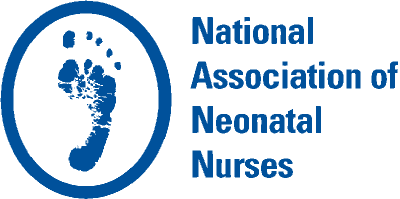Feature
Using a Cranial Molding Device to Correct Dolichocephaly in the NICU
CORRECTING DOLICHOCEPHALY IN THE NICU
Shari Lynn Weise, MSN RNC-NIC NIDCAP
Abstract
Because premature infants have softer and thinner cranial bones than full term infants, they are at increased risk for head shape deformities in the Neonatal Intensive Care Unit (NICU). Head shape deformities are associated with developmental delays and cosmetic disfigurement. Frequent repositioning, changing the infant’s crib orientation, and providing cares from both sides of the crib or isolette may minimize the effects of head shape deformities, but do little to correct them once they occur. A literature review (CINAHL and OVID) utilizing the keywords deformational plagiocephaly, cranial index measurements, dolichocephaly, prematurity, and NICU yielded over 400 studies. Many of these articles discussed the prevalence of head shape deformities and the impact of head shape deformities on developmental delays. Only a few studies noted the use of a cranial molding device to prevent or correct head shape deformities in the NICU setting. The purpose of this article is to raise awareness of head shape deformities and describe the outcomes of an evidence-based practice focused on correcting dolichocephaly, a common type of premature head shape deformity in the NICU.
Correcting Dolichocephaly in the NICU
Head shape deformities occur when constant pressure causes flattening on one part of the skull (DeGrazia, Giambanco, Hamn, Ditzel, Tucker, & Gauvreau, 2015). In addition to cosmetic alterations in the shape of the skull, head shape deformities can be associated with cognitive and motor delays (Hussein, Woo, Yun, Park, & Kim, 2018). Preterm infants are at increased risk for dolichocephaly, a disproportionately narrow and long head shape, because of their softer and thinner cranial bones and because they are often positioned on their sides for extended periods of time (Ifflaender, Rudiger, Konstantelos, Wahls, & Burkhardt, 2013). This evidenced based project (EBP) change was initiated based on the perception of nurses and therapists who felt infants were being discharged home with some degree of dolichocephaly despite nursing interventions focused on preventing the disorder. This paper will present the outcomes of an EBP change focused on correcting dolichocephaly using a cranial molding device.
Study Question
In premature infants admitted to the Neonatal Intensive Care Unit, where dolichocephaly has been noted, does a cranial molding device correct the deformity after five days of use?
Setting and Subjects
The EBP took place in a 20-bed Level IIEQ NICU between August 2016 and August 2017. In total 60 premature infants, with a corrected gestational age greater than 34 weeks, were screened for dolichocephaly. Of those, 39 infants were found to have abnormal head shape measurements and were placed in the head shaping device.
Interventions
Ifflaender, et al. (2013) recommended prevention and management of head shape deformities begin during the NICU hospital stay. Danner-Bowman & Cardin (2015) suggested repositioning efforts, such as frequent position changes throughout the day (supine, right, left, and prone), placing the crib perpendicular versus parallel to the head wall and approaching the infant’s crib from both sides, alternating the infant’s crib orientation, and tummy time as measures to prevent and correct head shape deformities. These preventative measures existed in the unit prior to the EBP.
Advocated in literature was the use of cranial molding devices as adjunctive treatments to routine nursing interventions (DeGrazia et al., 2015; Wilbrand, et al., 2013; Sillifant, et al., 2014). The cranial molding device chosen for this EBP change consisted of two moldable tubes (one thicker with straps, one thinner without straps) and a small rectangle pillow. This device was chosen because of the ability to provide containment to the infant. Although the device had not undergone quantitative studies for efficacy, the creator of the device had taken before and after device use photographs. These photographs appeared to demonstrate a change in the shape of the head from long and narrow (dolichocephalic) to a rounded, normal appearance. While the primary purpose of this practice change was to determine whether the cranial molding device would correct dolichocephaly; of equal importance was the goal to increase awareness of dolichocephaly in the NICU among nursing, the medical team, therapists, and families.
Methods and Instruments
Obtaining cranial index (CI) measurements using a craniometer is a valid way to assess dolichocephaly. The value is derived by measuring the breadth of the skull x 100, then dividing that value by the length of the skull. Dolichocephaly is defined by a cephalic index less than 75mm (Merriam-Webster Medical Dictionary, 2019). Infants identified with dolichocephaly were placed in the cranial molding device for a period of five days. Their CI was obtained at baseline (pre-device use) and upon discontinuation of the device. A paper sign placed over the infant’s crib tracked the five-day application period. Parents received written education on head shape deformities, the cranial molding device, and ways to prevent the recurrence of head shape deformities at home using tummy time and minimizing time in swing sets, infant carriers, and car seats. They were also given information on safe sleep practices at home.
Staff Education
Nursing and therapy staff were educated on the prevalence of head shape deformities and the possibility of cognitive and motor delays associated with the disorder. They practiced measuring CI on a doll. They also received hands-on training regarding the proper use of the device.
Device
The device consisted of two moldable tubes (one thicker with straps, one thinner without straps) and a small rectangle pillow. Both tubes have a center seam. Infants were swaddled or placed into sleep sacks before being placed within the device. The thicker tube was positioned around the infant’s head. The straps of the thicker tube were crisscrossed over the infant’s body, providing containment. The thinner tube was used as a boundary supporting the infant’s legs/feet. The manufacturer recommends placing the small bean bag under the infant’s head and shoulders. Often, the small bean bag was felt to be too bulky, and therefore was not used.
Evaluation Methods
CI measurements were obtained at baseline and upon discontinuation of the device. These values were documented in a log book which remained in the unit. To ensure accuracy in measurements, two staff members completed the measurements simultaneously. To maintain discretion, the only identification in the log book, besides the measurements, were the infant’s initials and bed space. Due to the inability to follow infants post-discharge, long-term measurements were not obtained.
Outcomes
Pre- and post-device measurements were obtained on 28 of the 39 infants screened and placed into the device. Of those, 17 infants demonstrated head shape correction (>75mm) and 10 infants demonstrated head shape improvement (higher than baseline, but <75mm). These infants were documented as improved and placed back into the device. No further data was gathered on the improved group. One infant demonstrated similar pre- and post-device measurements and was documented as no improvement in the data collection.
Challenges
Of the 39 infants placed into the device, six of them did not receive post device measurements prior to discharge. Additionally, the device was discontinued on five infants, whom the nurses or medical team felt could not tolerate remaining supine within the device for five days. Efforts to re-educate nursing staff and the medical team were conducted, thus increasing compliance throughout the remainder of the data collection time-frame.
Another challenge is balancing the use of a cranial molding device while modeling back to sleep initiatives in the NICU. Parent education should include safe sleep practices and efforts to maintain normal head shape post-discharge through evidence-based initiatives, such as tummy time while awake, changing the infant’s orientation in the crib at home, and minimizing time in swing sets, infant carriers, and car seats.
Implications for Practice and Future Research
The head shaping device demonstrated efficacy by correcting or improving dolichocephaly in most infants placed in the device. This EBP also raised awareness of head shape deformities among staff members and infant family members. Lastly, because no quantitative data had been gathered on the cranial molding device prior to initiation of this EBP, new knowledge was acquired on the device. There were limitations to this EBP, most notedly was the small sample size (39 infants). Only infants with dolichocephaly were included in the data collection. Other head shape deformities, such as positional plagiocephaly, can occur in the NICU setting. It is unclear whether this device would correct or improve plagiocephaly. Another limitation of this EBP was the inability to obtain measurements of infants after they were discharged home. Prior to the implementation of this EBP, there were limited studies on the use of cranial molding devices to prevent or correct head shape deformities in the NICU. Research on cranial molding devices should continue and perhaps include longitudinal studies to gather long term outcomes.
Acknowledgements
The author acknowledges Melissa Watras, NICU Physical Therapist, and the entire nursing staff, physicians, and NNPs of Banner Estrella Medical Center NICU. Together, this team worked hard to identify, measure, and ensure compliance with the cranial molding device. This EBP was funded by the Banner Health Foundation through a Nursing Research Grant.
References
Danner-Bowman, K. & Cardin, A. (2015). Neuroprotective core measure 3: Positioning & handling—A look at preventing positional plagiocephaly. Newborn & Infant Nursing Reviews, 15, 109–111. http://dx.doi.org/10.1053/j.nainr.2015.06.009.
DeGrazia, M., Giambanco, D., Hamn. G., Ditzel, A., Tucker, L., & Gauvreau, K. (2015). Prevention of Deformational Plagiocephaly in Hospitalized Infants Using a New Orthotic Device. JOGNN: Journal of Obstetrics, Gynecologic & Neonatal Nursing, 44(1), 28–41. doi:10.1111/1552-6909.12523.
Hussein, M. A., Woo, T., Yun, I. S., Park, H., & Kim, Y. O. (2018). Analysis of the correlation between deformational plagiocephaly and neurodevelopmental delay. Journal of Plastic, Reconstructive, & Aesthetic Surgery, 7, 112–117. doi:10.1016/j.bjps.2017.08.015.
Ifflaender, S., Rudiger, M., Konstantelos, D., Wahls, K., & Burkhardt, W. (2013). Prevalence of head deformities in preterm infants at term equivalent age. Early Human Development, 89(12), 1041–1047. doi: 10.1016/j.earlhumdev.2013.08.011.
Merriam-Webster’s Medical Dictionary. (2019). Dolichocephaly. Retrieved from: https://www.merriamwebster.com/dictionary/dolichocephalic#medicalDictionary.
Sillifant, P., Vaiude, P., Bruce, S., Quirk, D., Sinha, A., Burn, S., … Duncan, C. (2014). Positional plagiocephaly: Experience with a passive orthotic mattress. Journal of Craniofacial Surgery, 25(4): 1365–1368. doi: 10.1097/SCS.0000000000000835.
Wilbrand, J., Seidl, M., Wilbrand, M., Streckbein, P., Bottger, S., Pons-Kuehnemann, J., … Howaldt, H. (2013). A prospective randomized trial on preventative methods for positional head deformity: physiotherapy versus a positioning pillow. Journal of Pediatrics. 162(6). doi: 10.1016/j.jpeds.2012.11.076.


